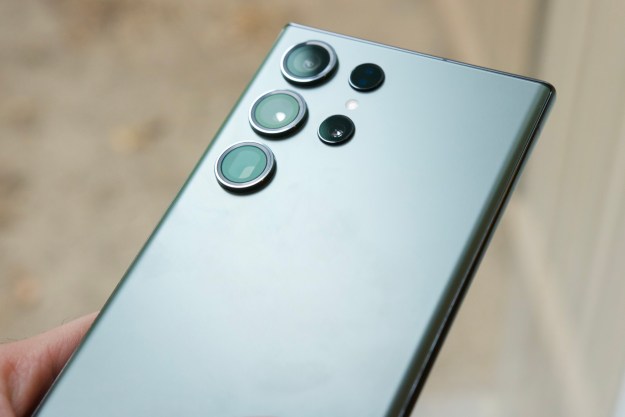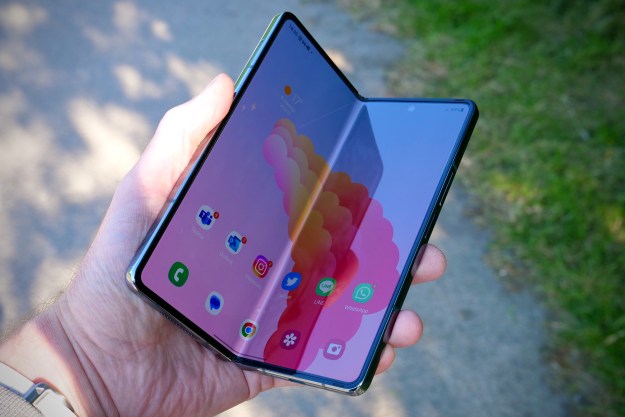 Borrowing e-books from libraries is a nifty idea. Not only are the titles digital (and thus searchable, sync-able, available on a wide range of devices and capable of scaling to match user’s displays and devices), but readers and libraries don’t have to deal with the overhead of managing, storing, cataloging, repairing, and replacing physical books. Digital editions are perpetually brand new. Even better, there are no late fees with e-books from libraries: They just expire when the lending period is over.
Borrowing e-books from libraries is a nifty idea. Not only are the titles digital (and thus searchable, sync-able, available on a wide range of devices and capable of scaling to match user’s displays and devices), but readers and libraries don’t have to deal with the overhead of managing, storing, cataloging, repairing, and replacing physical books. Digital editions are perpetually brand new. Even better, there are no late fees with e-books from libraries: They just expire when the lending period is over.
However, Penguin Group (USA) has now announced that it is suspending making new e-books available for libraries, and will no longer allow libraries to loan out e-books for Amazon’s Kindle. Penguin cites security concerns, which is more or less industry code for piracy.
“Due to new concerns about the security of our digital editions, we find it necessary to delay the availability of our new titles in the digital format while we resolve these concerns with our business partners,” Penguin said in a statement on Monday.
Existing ebooks from Penguin will still be available for lending, just not for the Amazon Kindle. The company offered no time frame on when it might resume making new titles available for library lending, or allow titles to be lent at all to Kindle users.
With its new — perhaps temporary — policies, Penguin joins the ranks of major publishers that keep their digital editions out of libraries: Macmillan and Simon & Schuster don’t make any e-book titles available for library lending, and HarperCollins has placed restrictive terms on library e-book lending: It only allows ebooks to be rented 26 times. Now four publishers of the “big six” either restrict library lending of e-books, or don’t allow it at all.
What’s the deal? Wouldn’t e-books in libraries seem to be a slam dunk for both publishers and readers?
E-book lending and book sales
There’s a tendency to think of books sales mostly being to consumers — after all, that’s what book stores do! But institutions like schools and libraries are also major book buyers. When a library buys physical books for lending, they often buy multiple (sometimes dozens) of copies. For new titles, these are often the top-dollar hardcover editions. Libraries also have to replace most of those copies as they get lost, damaged, or simply worn out from repeated lending. So schools and libraries represent a continual source of sales for publishers, particularly for popular titles.
The math doesn’t quite work out the same for e-books. Libraries do have to purchase multiple licenses to e-books, equal to the number that they want to lend at any given time. However, those ebooks don’t wear out: They’re just as pristine the 100th time they’re loaded into an ereader as the first time they’re checked out, meaning libraries don’t have to go back to the publisher for fresh copies on a continual basis.
The perpetually pristine nature of digital content is the basis for HarperCollins placing an arbitrary limit of 26 checkouts on e-books: They figure that’s equivalent to about one year of lending life for a library that has a two-week lending period. After that, HarperCollins figures libraries would need a new copy — hence, a new license.
Amazon and OverDrive
Penguin’s specific beef with library e-book lending is directly tied to Amazon. While the publisher is foregoing releasing new ebooks to libraries, it is also barring all e-book lending to Kindle users.
For many U.S. libraries, e-book lending to Kindle devices comes by way of Ohio-based OverDrive, which runs e-book lending services used by more than 11,000 schools and libraries in the United States and more than 15,000 worldwide. Last month, OverDrive announced a deal with Amazon to lend e-books to Kindle owners, which OverDrive describes as “Kindle compatibility.” OverDrive can also handle lending to iPads, and supports essentially all e-book formats. Users check out DRM-protected copies of e-books, and they automatically expire after a fixed lending period. For Kindle users, titles borrowed from a library appear in their Amazon.com accounts; from there, the content can be delivered to any Kindle device or app.
OverDrive says it is “actively working with Penguin” to restore access to new titles as well as make e-books available for lending to Kindle users.
The fact that library lending for Kindle users is specifically handled through customers’ existing Amazon.com accounts probably sets many publishers’ teeth on edge. It even rankles some readers, since in a way it turns public libraries into Amazon storefronts for e-books.
The bad blood on e-book lending doesn’t end there: earlier this month Amazon announced its own Kindle Owner’s Lending Library that lets Amazon Prime members who own a Kindle to borrow one book per month from a pool of about 5,000 titles with no additional charge. Amazon says it doesn’t need any special permissions for its Kindle Lending Library, but many publishers disagree: They look at the the Kindle Lending Library as letting two to five million Amazon Prime users have all the e-books they want for free. Some publishers have characterized Amazon’s move as a breach of contract, and the Author’s Guild has also gotten in on the action. So far, none of the “big six” publishers are taking part in Amazon’s lending library, leaving little doubt that the Lending Library—and Amazon’s move into library lending with OverDrive — serves to further consolidate Amazon’s grip on the e-book industry.
 Piracy and book sales
Piracy and book sales
Publishers also have ongoing concerns with piracy of digital books — one only needs to visit a Torrent site to encounter gigabytes upon gigabytes of illegally distributed digital books, often including just-published titles. Some are simply scanned page for page from physical copies, some are converted to text using OCR software, and others are pure text versions. Many are bad quality, but a surprising number are quite good, obviously pirated from publishers’ own electronic titles, stripped of DRM. All this content is available (illegally, in most cases) for free to anyone who can find it.
Publishers like Penguin probably look at e-book library lending as contributing to piracy in two primary ways.
First, it puts multiple intermediaries between a publisher and a reader: There’s the library itself, and there’s another layer of distributors (like Amazon and OverDrive) who actually process and package the digital content for the libraries. The more people who are involved in the process of lending e-books, the more opportunities for problems, bugs, and loopholes that can be exploited by pirates.
The second likely issue — and probably Penguin’s specific problem with Kindle lending — has to do with DRM. As the most successful e-book platform to date, Amazon’s AWZ, Kindle (Topaz) and brand-new Kindle Print Replica (KPR) formats are the biggest target for content pirates. Tools to remove the DRM protecting all Amazon’s e-book formats (including the new KPR) are readily available. While there are perfectly legal ways to use those tools, they undoubtedly contribute to e-book piracy. If a user at an OverDrive-using library checks out a book that’s not in an Amazon format, that book is converted to a Kindle format and then made available via the user’s Amazon account. Although essentially every e-book format out there has been cracked, this conversion provides one-stop-shopping for any content thief who can get a fake library card. In most places, that’s breathtakingly easy — after all, the primarily purpose of public libraries is to serve the public.
Can DRM work for e-books?
Although the publishing industry has faced issues of digital piracy for decades, the popularity of e-readers like Amazon’s Kindle family and Barnes & Noble’s Nook devices has brought the issue to the foreground. The music industry suffered from having millions of “unprotected masters” floating around in the form of audio CDs that could easily be ripped, converted to MP3 or another format, and distributed via the Internet. Physical books are similarly “unprotected” from piracy, and while the process of copying them is technically very simple (just as easy as photocopying) it hasn’t proven as popular amongst folks willing to consume pirated content. Why? Simply put, avid readers have always preferred books. Most music listeners can’t distinguish between a CD and a 128Kbps MP3 file — and, frankly, that’s a shame. However, almost any reader can distinguish between a scanned or OCR-converted text on a computer or printout and even a much-loved trade paperback. Real books are better.
E-readers change that equation in two ways. First, they provide a better format than a computer screen or printout for consuming an electronic text: they’re small, portable, generally have long battery life, and (in the case of readers with E-Ink displays, anyway) have a very paper-like quality to them. Second, the e-reader ecosystem has created a market for digital editions of books that are produced (and published) separately from their hardcopy equivalents. These electronic editions have proven very popular — e-book sales passed even paperback sales in the United States earlier this year — and where there’s market demand for digital content, there will be piracy. Except now it’s not an arduous process of scanning pages, applying OCR software, and winding up with an error-filled facsimile of the original: Instead, the pirate’s preferred target are pristine digital editions crafted by publishers.
E-book sellers use DRM technology in an effort to protect content. In theory, DRM technology controls who is authorized to view or use digital content; most ebook stores operate on account-based access principles, meaning users create an account with the distributor, and associate particular rights to particular content with that account. If a user changes to a new device, they can authorize that device to use content from their account (which sometimes means de-authorizing another device). Services like Amazon’s Kindle store and Apple’s iCloud make syncing content between devices relatively straightforward, although lending to friends is still nigh-impossible.
However, as the music and movie industries have found, DRM is more of an annoyance to legitimate customers than a hindrance to piracy. Any DRM scheme can be broken and, in fact, most have — often repeatedly.
The music industry eventually realized that distributing music without DRM constraints was in their best business interest, although they’re still not thrilled with the revenue they’re earning off digital music sales. It’s not yet clear if the movie or book industries will follow suit, but DRM technologies deter sales in proportion to the degree that they annoy or frustrate consumers — and the way e-books are going, that infection point may be coming soon.



